This Earth Day, Read Your Way to a Leaner, Greener Lifestyle
Sustainability guides—old and new—that inspire Sierra staffers

Photo by VanderWolf-Images/iStock
Earth Day tends to generate robust debate around the optimal balance among individual, corporate, and policy-based contributions to our home planet. No, tweaks to our own behavior aren’t enough to mitigate the climate crisis. They need to be paired with systemic change. But you can still do your part: If everyone reduced their carbon footprint, cut consumption, and did their best to avoid wasteful products like single-use plastics, we could all deepen our connection to the cause of climate action and become more empowered to play a role in larger political and corporate systems. What’s more, lifestyle improvements may also be the best-known cure for eco grief—being mindful of the resources we use and community-oriented results, psychologists say, produces a greater sense of meaning and purpose. And of course, small and gradual changes add up over time and influence our peers’ behavior.
It can be overwhelming to figure out where to start streamlining (greenlining?) your lifestyle. Where should one start? Plant-based diets? Bike-commuting? Repair-and-reuse? The good news is there are plenty of smart authors who have already done the hard work of compiling these and many other best practices. From classics to new releases, these reads offer a smattering of entry points into an enriched personal relationship with the movement.
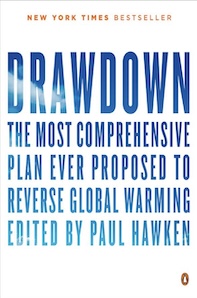
Project Drawdown: The Most Comprehensive Plan Ever Proposed to Reverse Global Warming
By Paul Hawken
Penguin Books, 2017
The result of 200 experts’ research across the globe, Drawdown is an ambitious, tiered breakdown of the best ways to “arrest and reverse” climate change. Offering up 80 pragmatic and actionable solutions both systemic (better educating women and protecting grasslands, say) and individual (composting and cooking with biogas), it’s also the most optimistic and inspiring book I’ve read about global warming. I was instantly enamored—it’s scientifically robust, yet also contains powerful prose (and even some poetry!). With letters from Pope Francis, Peter Wohlleben, and many other luminaries, Drawdown makes you feel like an insider, along with some of the most brilliant folks alive, on the quest to salvage our home planet from crisis. —Katie O’Reilly
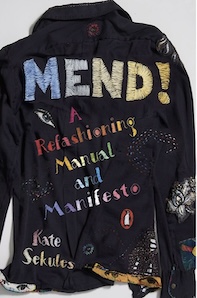
Mend! A Refashioning Manual and Manifesto
by Kate Sekules
Penguin Books, 2020
Between non-biodegradable fabrics, toxic chemicals, water use, and sheer quantity of clothes produced, the fashion industry is an enormous culprit in planetary destruction. That’s why Kate Sekules, author of Mend!, argues that visible mends on our clothes are not just a fashion statement, but an act of protest. Out this past fall, Sekules’ book is part inspiration, part how-two, and part jaunt through fashion history, with easy-to-follow directions and fun photos of old clothes turned new through creative repair. In essence, she seems to be saying we should treat our clothes like we treat our friends—spending time on the ones we have, not constantly searching for new ones. If we did, we’d repair a lot more than our clothing. —Wendy Becktold
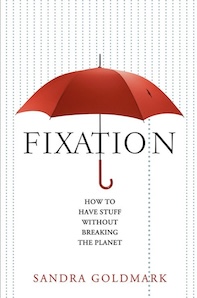
Fixation: How to Have Stuff Without Breaking the Planet
by Sandra Goldmark
Island Press, 2020
Household consumption represents up to 60 percent of global greenhouse gas emissions and accounts for between 50 and 80 percent of total land, material, and water use. Statistics like these kept Sandra Goldmark up at night, so she decided to do something about it. In 2013, she and her husband opened their first pop-up repair shop. Over the next seven years, they repaired roughly 2,500 household items, navigating barriers like poor designs, cheap plastic parts, and proprietary screws. Fixation, out this past fall, is the story of that journey. “Our massive global system of consumption is broken—and it’s breaking the planet,” Goldmark writes. Her book will help you rethink your relationship to stuff and imagine a world where every Walmart, Target, Home Depot, and IKEA hosts a repair shop. —Wendy Becktold
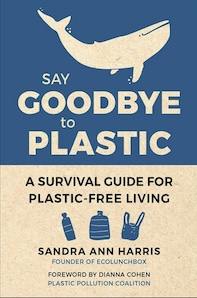
Say Goodbye to Plastic: A Survival Guide for Plastic-Free Living
by Sandra Ann Harris
Hatherleigh Press, 2020
Plastic is so ubiquitous in our society that those trying to live without it must place themselves, to a greater or lesser degree, outside of it. The solutions suggested by author Sandra Ann Harris—the founder of ECOlunchbox, a line of reusable metal food containers based on traditional Indian tiffins—are mostly in the direction of finding more durable substitutes: cloth bags for shopping, an insulated metal cup or bottle for beverages, a traveling kit including a glass or metal straw, reusable utensils, a mason jar. At the grocery store, you can buy food in bulk and eggs in cardboard rather than Styrofoam, but that’s just you, living a pristine and virtuous existence outside the plastic society. Saying goodbye to plastic for real, of course, will take changing that society. Banning plastic bags and bottles would be a good start. —Paul Rauber
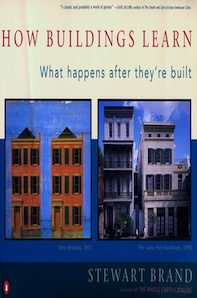
How Buildings Learn: What Happens After They’re Built
by Stewart Brand
Penguin, 1995
These days, Stewart Brand is most well-known in environmental circles for his ardor for nuclear energy, de-extincting the passenger pigeon, and building a giant clock in the Nevada desert that chimes once every hundred years. How Buildings Learn feels like the exact environmental opposite: a charming, rambling ode to vernacular architecture, adaptable floorplans, peaked roofs, ease of repair (one chapter is actually titled “The Romance of Maintenance”), and other ways that buildings endure across generations without becoming obsolete. If you’re buying, building, or renovating a home, this book is full of practical advice and entertaining mea culpas (like Brand’s apology for being such a geodesic dome booster back in the day). —Heather Smith
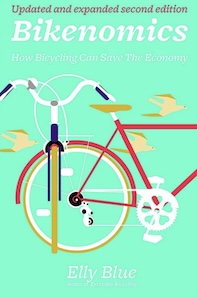
Bikenomics
by Elly Blue
Microcosm, 2013
This is the book to study up on before going down to city hall to advocate for better bike infrastructure. Many pro-bike arguments focus on the environmental benefits of cycling. That’s a tough sell when facing down business owners and elected officials whose primary concern is economic—it’s common for requests for new bike infrastructure to be met with worries that more space for bikes means more traffic congestion, less parking, fewer customers, and therefore lower tax revenue. In Bikenomics, Blue carefully demolishes that argument with research that shows how people who use bikes as a primary source of transportation actually contribute a disproportionate share of revenue to city budgets, both because they spend more money locally and because they have more disposable income to spend. —Heather Smith

National Audubon Society Birds of North America and National Audubon Society Trees of North America
Knopf, 2021
A lot has changed in the world since 1980, when the National Audubon Society last updated its best-selling field guide to the trees of North America. Even more so since 1995, when the organization last updated its field guide to the birds of North America. There couldn’t be a better time to update them than now: As climate change fuels a biodiversity crisis, we need every reminder we can get of the breadth and beauty of the planet’s flora and fauna, and why we have to take action now to protect them. In these completely new and updated volumes, Audubon has collaborated with leading scientists, taxonomists, field experts, and photographers to deliver a feast for the eyes and the imagination alike. Birds covers nearly 1,000 species and offers 3,500 full-color photographs of everything from full-wing flight to skimming along the surface of water, with fascinating details about bird intelligence and communication. Trees covers more than 540 species with 2,500 full-color photographs while also exploring the complexity of plant intelligence and communication. Each empowers the reader with the conservation status of the species on any given page and reports how climate change is threatening too many species of trees and birds with extinction.
We’re just as capable as they are to tune in to our environment and listen to what it has to say. If we don’t heed the call to protect our planet, we risk losing the only Earth we have. And there is no Planet B. —Jonathan Hahn
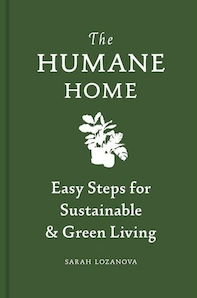
The Humane Home: Easy Steps for Sustainable and Green Living
by Sarah Lozanova
Princeton Architectural Press, 2021
This new book, from sustainability consultant and journalist Sarah Lozanova, will get you seriously jazzed to give your abode and daily routine an audit and find simple, satisfying, and affordable ways to optimize your surroundings. It’s a pretty, relaxing-to-read little tome, chock-full of easy DIY endeavors. Think starting an herb garden, making nontoxic cleaning solvents, and embracing hacks to help slash your utility bills. On a more macro level, The Humane Home will subtly reshape how you think of your living space, and re-envision it as an empowering refuge and place of potential. —Katie O’Reilly
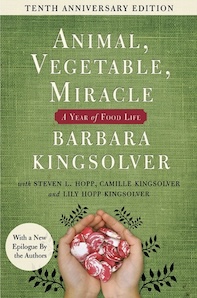
Animal, Vegetable, Miracle
by Barbara Kingsolver, Steven L. Hopp, and Camille Kingsolver
Harper Collins, 2007
Until I discovered this nonfiction quest, I thought “back-to-the-land living” was a dreamy-yet-unfeasible-for-most notion that required one to eschew all modern comforts for pastoral property and 24/7 commitment to gardening. With help from her biologist husband and 19-year-old daughter, novelist Barbara Kingsolver did just that—committed to a year consuming only food they grew, killed, or procured from known farmers. Their resulting book takes readers along for a vicarious, eye-opening adventure into root vegetables’ biological secrets, mushroom-hunting, turkey sex, and cheese-making. Between Kingsolver’s charming diary secrets and her surprising insights into society’s long-mounting disconnection from our food sources and its impact on crime rates, this book will make you think more personally—and holistically—about where your food comes from. It also inspires ideas for how city folks, too, can wean ourselves off chemicals, junk food, and fossil fuel dependence. Oh, and the recipes will leave you hungry. —Katie O’Reilly
 The Magazine of The Sierra Club
The Magazine of The Sierra Club



